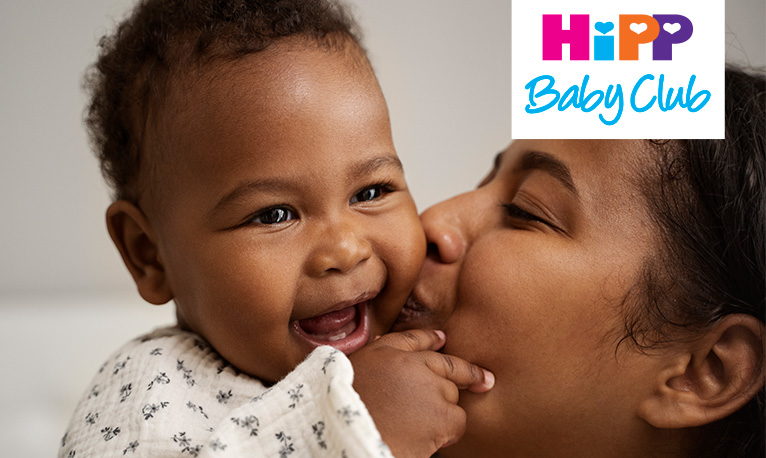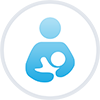Safe Sleeping For Your Baby
Newborn | Toddler | | Laura Thompson
Sleep is essential for a baby's growth and development, but it's equally important to ensure that your baby’s sleep environment is safe. Establishing healthy sleep habits and following guidelines can help reduce the risk of Sudden Infant Death Syndrome (SIDS) and promote peaceful sleep for both you and your baby. Following the recommendations by trusted organisations like The Lullaby Trust will help ensure your baby’s sleep is as safe as possible.
Creating a safe sleep environment is one of the most important steps parents can take to protect their baby. Unsafe sleep conditions, such as sleeping in an overly warm room or using soft bedding, can increase the risk of SIDS.
What is the Safest Way for a Baby to Sleep?
The safest way for a baby to sleep is on their back, on a firm, flat mattress, in a clear space free of pillows, soft toys, and loose bedding. Always place your baby on their back to sleep for every nap and at night, as this reduces the risk of SIDS. Babies should sleep in their own cot or moses basket in the same room as their parents for at least the first six months.
Avoid letting your baby sleep on their side or stomach, as these positions can increase the likelihood of airway obstruction. If your baby rolls onto their side, gently reposition them onto their back.
Is Co-Sleeping Safe?
Co-sleeping can increase the risk of SIDS, particularly if it involves sharing a bed with a baby. The Lullaby Trust advises against bed-sharing, especially if either parent smokes, has consumed alcohol, or is excessively tired. However, placing your baby in a separate cot or bassinet next to your bed in the same room for the first six months is recommended as a safer alternative. If you choose to co-sleep, always follow safety guidelines: ensure the baby sleeps on their back, use a firm mattress, and avoid pillows, duvets, or heavy bedding near the baby.
When Can I Introduce Co-Sleeping?
The safest time to consider co-sleeping, if at all, is after the first six months, when the risk of SIDS decreases. Even then, it’s important to ensure your bed is free of hazards and to follow strict co-sleeping safety protocols.
Safe Sleeping for Premature Babies
Premature babies are at a higher risk of SIDS, so it's essential to follow strict safe sleep guidelines. These babies often have underdeveloped respiratory systems, making them more vulnerable. Keep your premature baby in a temperature-controlled environment, free of blankets and toys that could accidentally obstruct their breathing. Extra care should be taken with sleep positioning and temperature regulation to reduce the risk of overheating. Always ensure the room is between 16-20°C (60-68°F), as overheating is a known risk factor for SIDS.
Baby Sleep Guide: Creating a Safe Sleep Environment
Things You Need for a Safe Sleeping Environment
To create a safe sleep environment for your baby, you’ll need the following items:
- A Cot or Moses Basket: Ensure your baby’s crib, cot, or Moses basket meets current safety standards. The mattress should be firm and flat, with no gaps between the mattress and the crib’s sides.
- Baby Sleeping Bags or Blankets: A well-fitted baby sleeping bag is ideal, as it prevents your baby from wriggling under loose blankets. If using blankets, they should be lightweight, and you should tuck them in securely under the mattress, keeping them no higher than your baby’s shoulders.
- Room Thermometer: A room thermometer is vital for maintaining a safe sleep temperature. Aim for a room temperature between 16-20°C (60-68°F). This helps prevent overheating, a key risk factor for SIDS.
Safe Sleep Dos and Don’ts
Do's:
- Always place your baby on their back to sleep.
- Keep your baby’s sleep space free of pillows, blankets, and toys.
- Use a firm, flat mattress that fits snugly in the crib.
- Maintain a comfortable room temperature, ideally between 16-20°C (60-68°F).
- Ensure your baby sleeps in the same room as you for at least the first six months.
Don'ts
- Don’t let your baby sleep on their side or stomach.
- Avoid soft mattresses, cushions, or sleeping surfaces.
- Never allow your baby to sleep on a sofa, armchair, or with soft toys in the crib.
- Avoid overheating by using too many layers of clothing or blankets.
Can My Baby Still Sleep on Their Back if They Have Reflux?
Yes, babies with reflux should still sleep on their back. There is no increased risk of choking when a baby sleeps on their back, even if they have reflux. If you're concerned about your baby’s reflux or their sleeping position, consult a healthcare professional for additional guidance.
What Should a Baby Wear to Sleep?
Knowing what your baby should wear to bed is key to ensuring their comfort and safety. Depending on the room temperature, dress your baby in a lightweight sleepsuit or vest. If using a sleeping bag, make sure it's appropriate for the season (tog rating) and the room's temperature. A 2.5 tog sleeping bag is suitable for a room between 16-20°C (60-68°F), while a 1.0 tog is better for warmer temperatures.
Always check your baby’s temperature by feeling their chest or the back of their neck—hands and feet can often feel cooler and aren’t a reliable indicator.
Can I Swaddle My Baby?
Yes, swaddling can help soothe your baby, especially in the early months. However, swaddling must be done correctly to prevent overheating or restricting your baby’s hip movement. Ensure the swaddle is snug but not too tight, and stop swaddling as soon as your baby shows signs of rolling.
How Can I Ensure My Baby Is Sleeping Safely During Summer Months?
In warmer months, it's important to dress your baby appropriately to avoid overheating. Use lightweight clothing, such as a short-sleeve vest or a light sleeping bag with a low tog rating (0.5 or 1.0 tog). Keep the room well-ventilated, use a fan which is not pointing directly at your baby if necessary, and monitor your baby’s temperature by feeling their chest or neck. Avoid using blankets, and keep the room temperature within the recommended range (16-20°C).
What Happens If My Baby Turns to Their Side Whilst Sleeping?
If your baby rolls onto their side during sleep, gently turn them back onto their back. As babies grow older and gain more control over their movements, it’s common for them to roll around during sleep. However, always place them on their back initially for safe sleeping.
When to Move Baby Into Their Own Room
According to safe sleep guidelines, it’s recommended that babies sleep in the same room as their parents for at least the first six months. This reduces the risk of SIDS. After six months, you might consider moving them to their own room. Make sure the new room is set up safely with the right sleep environment before making the transition.
When Should I Move My Toddler From a Cot to a Bed?
I generally recommend keeping toddlers in a cot until as close to 3 years as you can, as children under 2.5 years old often lack the cognitive ability to fully understand the concept of staying in bed all night.
Moving them too early may lead to disruptions, as they might not yet be ready to handle the freedom of a bed. However, some parents make the transition sooner, especially if their child starts climbing out of the cot or seems unhappy.
Easy-going children might adapt well, while more curious or alert toddlers may struggle with the change. If your child is attempting to climb out of the cot, safety measures like lowering the mattress or using a sleep sack can help delay the transition. When the time comes, involve your toddler in the process, choose a calm period for the change, and maintain consistency in their bedtime routine.
What to Do If Your Baby Is Developing a Flattened Head
Some babies develop a flattened head due to spending long periods lying on their back. To prevent this, give your baby supervised tummy time during the day to strengthen their neck and upper body muscles. You can also alternate the direction in which you lay your baby down in their cot, encouraging them to turn their head to different sides. Always speak with a healthcare professional if you have any concerns.
When Is SIDS No Longer a Risk?
The risk of SIDS decreases significantly after the first six months and becomes very low after 12 months. However, continuing to follow safe sleep practices beyond the first year is beneficial for your baby’s overall safety and well-being. By following these guidelines, you can create a safe and comfortable sleeping environment for your baby, reducing the risk of SIDS and promoting healthy sleep habits as they grow. Always stay informed by referring to trusted sources like The Lullaby Trust to ensure you're using the latest, evidence-based advice.


